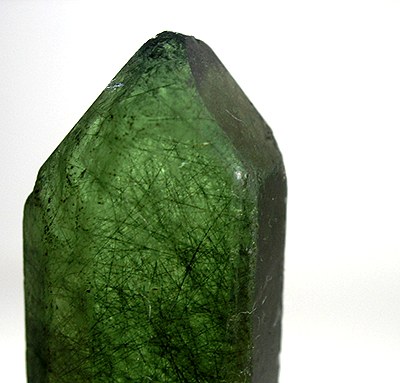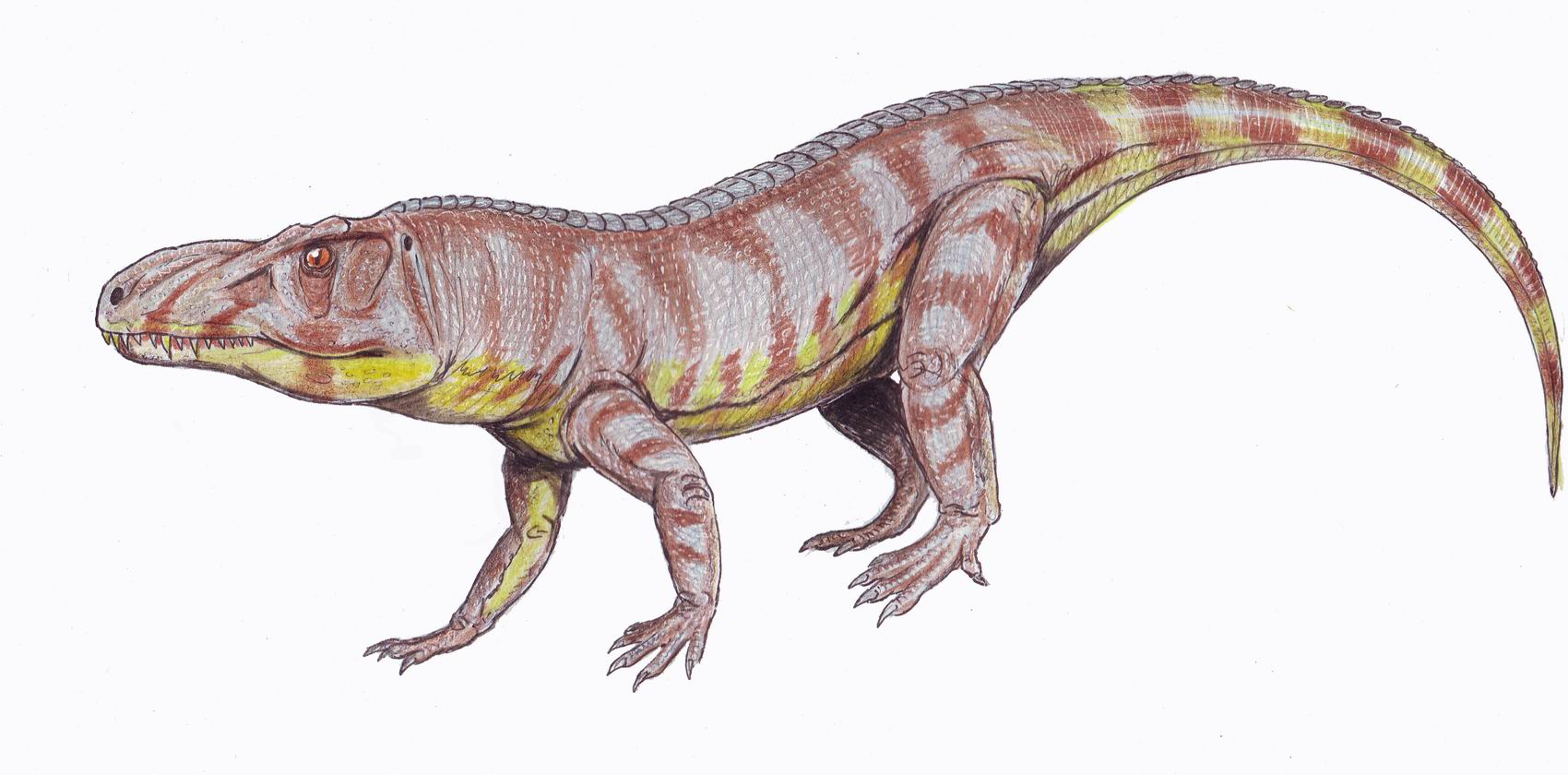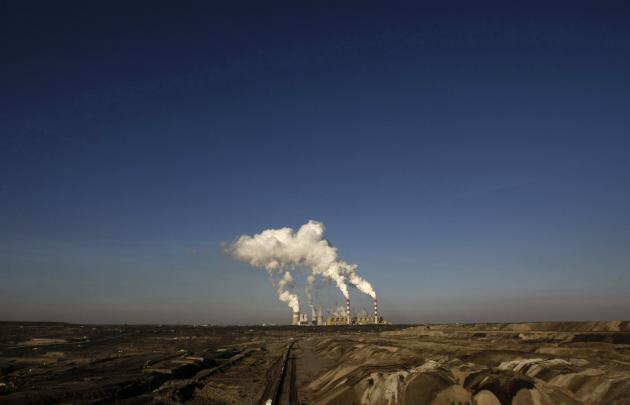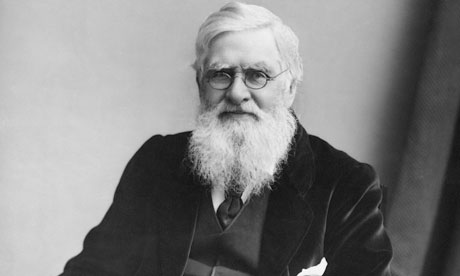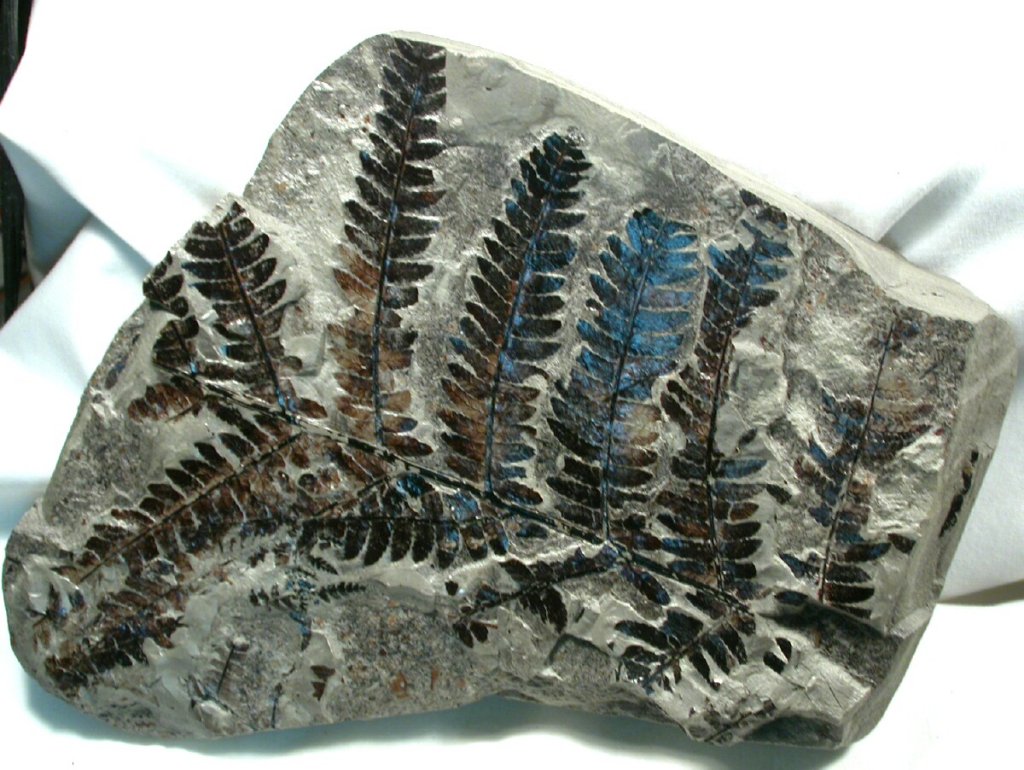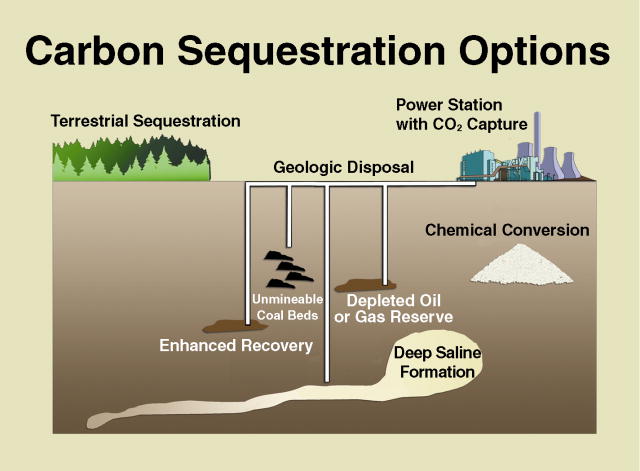The investigation into shale gas continues with an intial assessment of the potential of Britain's geology for shale gas exploitation. A report produced for the Department of Energy and Climate Change estimates that up to half of the UK could have suitable geology. This isn't too much of a surprise, as shale is the most common sedimentary rock and hasn't featured as a strategiec resource for the country in the past.
The resource is there, the question remains whether the economics, energy security and environmental demands can all be made to balance. What do you think?
Wednesday 18 December 2013
Tuesday 17 December 2013
Jade Rabbit finds remarkable rocks
China has sent its first space mission to the moon a rover called Yutu (which translates as "Jade Rabbit") is exploring a part of the Moon called the Mare Imbrium.
Initially I must admit to being sceptical about the scientific purpose of the mission, thinking that it may have just been a prestige project moving Chinese space science forward rather than to discover new ideas about the Moon's geology. However, the rover has landed at the eastern edge of its intended landing area and consequently has ended up in a geologically fascinating part of the moon. It has landed at the edge of an area of lava flows which (as they have few impact craters visible) are thought to be some of the youngest flows on the Moon. The geological kit on the rover should show something about the composition of these lavas. It will be interesting to see what Yutu discovers on its lunar travels.
Friday 13 December 2013
A new source of energy
The American Geophysical Union conference continues to throw up exciting developments in geological research including the possibility of extracting hydrogen from olivine. By speeding up the natural geochemical process of serpentinisation hydrogen can be liberated from olivine crystals giving a potential source of carbon-free energy.
All you need is a pressure cooker (to give a pressure 2,000 times that of the atmosphere and a few hundred degrees of heat) made with some diamonds and some ruby to speed up the reaction and you can make your own hydrogen.
This could make Iceland rich again. Can you work out why?
Penetration twin
A penetration twin is a type of twinned crystal. This is where crystals are joined either as contact twins, where the crystals share one surface, or as a penetration twin,where the crystals grow across each other (as in the crystal shown above).
Twinning is a feature of several minerals and can be a characteristic feature of different types of feldspar (see below). The crystal above is a mineral that you should know; can you identify it?
Twinning is a feature of several minerals and can be a characteristic feature of different types of feldspar (see below). The crystal above is a mineral that you should know; can you identify it?
Thursday 12 December 2013
How big???!!!???
Yellowstone is a big volcano - a really big volcano - so big a volcano we call it a supervolcano. It turns out that Yellowstone is actually much bigger than we had previously thought - 2.5 times bigger according to Professor Bob Smith from the University of Utah. This means that the magma chamber contains a staggering 200-600 cubic kilometres of molten rock.
Seismic surveys of the volcano have reavealed the true extent of the magma source, created by a sub-continental hot spot. Don't worry too much though, supervolcanoes don't erupt very frequently and Yellowstone doesn't look like it will erupt imminently....probably.
You can check out the Yellowstone Volcano Observatory and assess the risk yourself.
Waiting for "The Big One"
Los Angeles will be struck by a devastating earthquake.... soon. We don't know when but we do know that it will happen. By recording the earthquakes along the San Andreas Fault for nealry the last 200 years it is very apparent that through the 20th century the fault hasn't moved much comapred to the frequent earthquakes along the fault during the 19th Century. Contrary to what many people would think, geologists know that this is a "bad thing" because if the fault is locked, energy is being built up in the fault so that when it moves it will move a lot.
At the American Geophysical Union conference in San Fransisco, geoscientists from the US Geological Survey have been posing the question "is LA ready for a megaquake?"
Read through the article, do you think that they can cope with a shock on the scale predicted?
Sunday 1 December 2013
Cow dung bomb
There are some words in geology that graphically describe features we see in the rock, but few are quite as illustrative as cow dung bomb (sometimes known as a cow pat bomb). It is a type of volcanic bomb - igneous rock ejected from a volcanic eruption but t does have an unusual form resembling .... well you can guess. Most volcanic bombs cool in the air, creating a distinctive aerodynamic shape (see below). Cow dung bombs are more liquid and actually land still largely molten, giving them their distinctive shape.
Where do you think we could find cow dung bombs?
Where do you think we could find cow dung bombs?
Friday 29 November 2013
Triassic Toilet
Coprolites (fossilised faeces) are trace fossils that give an insight into the diet and digestive processes of long-extinct animals that we cannot get from their body fossils as the soft parts of an animal generally aren't preserved as fossils.
Palaeontologists working in Argentina have found a communal toilet area used by Dinodontosaurus with a remarkable density of 94pm-2 (poos per square metre!). The geological implications of this are fascinating in terms of what it can tell us about the behaviour of an early predecessor of the dinosaurs. The benefits of having a defined place for a toilet are obvious as parasites may be less of a problem and food and faeces aren't mixed. It could also have been a way for the Dinodontosaurus to ward off the crocodile-like predator Luperosuchus.
What I find interesting about this is that it implies some type of social organisation for these animals, something we don't see in modern cold-blooded animals. What do you think caused these animals to behave in this way?
Monday 25 November 2013
The energy conundrum
There's no denying it, we all want and expect energy in abundance. However as Ted Nield (editor of Geoscientist) put it "Everybody wants energy, as much of it as possible, and cheap. And nobody wants it to be generated - or its feedstocks extracted - by any method whatever, anywhere at all, and certainly not near where they live - unless they become rich in the process, in which case it’s fine, because they can move somewhere else."
Two stories have highlighted the dilemma that energy poses. Planning permission for an open cast coal mine in the Valleys has been refused because of competing local interests. Do we want the jobs and the energy security that this will bring or are we happy to import the coal that we all use and need from "somewhere else"? The BBC's Environment Editor has summed it up quite succinctly - "Why is everyone so angry about generating electricity?"
As a society we need to accept the geological, georgaphical and scientific realities of energy generation because we simply cannot have it all.
How do you think we should resolve these issues?
Friday 22 November 2013
Earth Explorer
We need the Earth to have a magnetic field to keep our atmosphere where we need it to be. Over the last few decades it has become apparent that the field is weakening; this may just be part of a natural variability in the strength of the field but it does highlight the fact that we don't know enough about it.
In order to try to understand the field it is essential that we make a map of it. The European Space Agency has launched three satellites today to map the field. They will hopefully provide some answers about a crucial aspect of the Earth's physics and possibly help to find mineral resources as well.
This mission is part of the ESA's Earth Explorer Programme.
In order to try to understand the field it is essential that we make a map of it. The European Space Agency has launched three satellites today to map the field. They will hopefully provide some answers about a crucial aspect of the Earth's physics and possibly help to find mineral resources as well.
This mission is part of the ESA's Earth Explorer Programme.
Thursday 21 November 2013
An island is born
Every so often a volcano erupts out of the ocean to form a new island. The most famous of these is an island called Surtsey, close to Heimaey off the south coast of Iceland. Since it emerged in 1963 it has been intensively studied by geologists and biologists to investigate rates of erosion and colonisation of new landmasses.
This formation of a new island has happened again, this time off the coast of Japan. Video of the eruption (taken from planes flying over the volcano) clearly show the volcanic processes that have built the volcano to such an extent it has grown above sea level.
Tuesday 19 November 2013
What do you want for Christmas?
For those of you writing your letters to Santa I have a suggestion. The world's most complete Diplodocus fossil is for sale. It was found in America by a German, assembled in the Netherlands and is now on display (and for sale in the UK). It does have an auction estimate of between £400,000 and £600,000 and you will be competing against museums and collectors in Europe and Asia. You will need a big house to put it on display as this specimen is 17 metres long, but it would be a talking point for anyone who comes to visit.
Poland or Coaland?
It is a complicated relationship that, to an extent, we share. Poland relies on coal to generate its own electricity, as a major employer and as a source of export income (which is where we have some interest - the UK imported 549,900 tonnes of Polish coal in the first half of 2013). However this isn't without cost - coal is an undeniably "dirty" fuel in terms of carbon dioxide, sulphur gases and particulates. To the point where people in coal mining areas in Poland don't want the industry that they rely on - as I said it is a complicated relationship.
It isn't just the Poles who need to make decisions about our future sources of energy, we too are facing some serious choices in the short term to balance our energy security and independence with the need to protect the environment. Whatever decisions are made, geologists will have to be involved in the science that must be the basis for any choice we make.
What do you think we should do?
An expensive piece of rock
A rare pink diamond has sold for £52,000,000 which, it has to be said, is quite a lot of money for soething that started out its existence as organic material on the sea bed. A trip down a subduction zone and back again via a volcano turned some carbon into an object that is worth the price of 2 new schools or would pay over 1,600 teachers for a year.
Looking at the specimen close up shows that it is flawless and vivid pink in colour. Perhaps that explain why someone would pay £4,362,416.11 per gramme, over 170,000 times more than gold.
Monday 18 November 2013
Griffith Crack
A Griffith Crack is a mechanism to explain how rocks, which can be very strong materials, are fractured by stress in the crust. Microscopic cracks in the rock, which can be the result of a flaw or inclusion in a mineral, will concentrate the tensile stress in a rock. This can lead to the expansion (or propagation) of the crack and even to failure of the rock resulting in a fault.
Etna Erupts
Europe's most active volcano is at it again. Eruptions over the weekend had lava fountains lighting up the night sky over Sicily.
Despite the frequency of volcanic activity, Etna poses little risk to surrounding setlements because of the mafic composition of its magma. It does put on a good show though.
Despite the frequency of volcanic activity, Etna poses little risk to surrounding setlements because of the mafic composition of its magma. It does put on a good show though.
Monday 11 November 2013
Dogger
A dogger is a concretion, a mass of sedimentary rock that has been cemented more than the surrounding rock. These often weather out of their original rock, the most spectacular examples in the UK are those in Laig Bay on the Isle of Eigg (shown above). The Moeraki Boulders on the South Island of New Zealand are another example of this feature.
The name was also used as a term, though now superseded, for the Middle Jurassic.
Friday 8 November 2013
Wales' Greatest Scientist?
It is 100 years since possibly Wales' greatest scientist died. Alfred Russel Wallace was born in Usk, Monmouthshire but found fame in his lifetime for the work he did in what is now Indonesia. He was the co-discoverer of the theory of evolution by natural selection, though because the other scientist to discover the idea (Charles Darwin) wrote the book - he got most of the credit.
Although most of Wallace's work was biological he did make some discoveries, other tha evolution, that have some geological significance. He defined the study of biogeography and worked out one of the earliest pieces of evidence that would,after his death, be explained by plate tectonics - the Wallace Line.
Although he was one of the most famous scientists of his day, he fell into obscurity after his death. This is being rectified with a new statue that has been installed at the Natural History Museum. His is an inspiring story of scientific excellence, utter determination and modesty despite his obvious talents - he is a Welshman to admire.
Friday 1 November 2013
Boudinage
Boudinage is from a French word meaning "sausages". It is a distinctive structure formed by extension of a competent rock under tensional stress where it is surrounded by incompetent rock. The competent rock starts to break up forming the sausage-like structures shown in the photograph. This can even happen on a microscopic scale within a rock where the process is called Rodding.
Dinosaur Maths
Argentinosaurus is a member of a group of dinosaurs that are the biggest animals ever to have lived on land - the Sauropods. This giant size presents a lot of questions for palaeontologists to answer about how they lived: how did they eat enough to survive? how did they breed? how quickly did they grow? and how did they move around?
This last question is particularly tricky, especially when we consider that Argentinosaurus was at least 10 times heavier than an elephant. New research has used computer models to investigate how these giant animals could move as the problem comes down to the maths behind the movement. Let me explain:
As the length of an animal increases, the weight of the animal increases by a cube (power of 3) because the weight is a property of the animals volume. However the force that the muscles can generate only goes up by a square (power of 2) because they are limited by the area of muscle connection to the bone.
The conclusion is that these animals are at the limit of the size that flesh and bone can support on land but they must have had lots of adaptations to cope with the stresses on their bodies - such as limited joint movement to keep them steady. Clearly, size isn't everything.
Wednesday 23 October 2013
Money grows on trees
Well almost....
Research on Eucalyptus trees in Australia has shown that the trees' leaves can contain a very small trace amount of gold if there is gold in the rocks below. This isn't enough to extract useful quantities of the metal from the tree; far more usefully it can indicate the presence of gold in the rocks which may be worth investigating. This gives geologists another tool with which to find resources, particularly ones lile gold that are found in such low concentrations.
It has been known for a long time that particular plants can indicate the geology under the surface, but this is the first time that these elements have been able to be located in the living tissue of the plants.
Thanks to Rosie for spotting this story.
Monday 21 October 2013
Probably not the end of the World.
Meteorites are beautiful and fascinating things that can tell us a lot about the early Earth and its formation. However there is a downside to them - ask the dinosaurs! Oh wait.. you can't....
Anyway for all the doom-mongers out there; an asteroid (2013 TV-135) has been recently discovered and, after doing a bit of maths, it has been calculated that it will make a near Earth pass in 2032. However, despite some uncertainty about its orbital path, there is only a 1 in 63,000 chance that it will hit us. To put this another way there is a likelihood of 99.998% that it won't hit us in 2032.
So we can rest safe in our beds.
Probably.
Thanks to Rosie for spotting this story.
Friday 18 October 2013
Piggyback Thrust
The far northwest of Scotland shows a superb example of this called the Moine Thrust (shown in the cross section above). This area was key for geologists to understand the process of mountian building, before plate tectonics was even discovered.
The rock that fell to Earth
The meteorite that fell into a Russian lake has been recovered. 570 kg of material has been collected from the lake bottom and should give more clues about the origin of the rock and, perhaps, the origin of our planet. Metoerites are the left-overs from planet formation and give us our best evidence about the composition of the deep Earth and its age.
Tuesday 15 October 2013
7.2
The Philippines suffered an earthquake with a magnitude of 7.2 today. This slideshow of photographs shows the impact of an earthquake of this size.
You can get an update on the latest developments by checking out the earthquake report.
Monday 14 October 2013
Ozocerite
Ozocerite (or Earth Wax) is a naturally forming type of paraffin wax that is found in veins, similar to minerals. It has been found in several places around the world, including Wales. It is formed from the evaporation of petroleum and is notable for its smell (the name means "stench wax" in Greek) though this is removed when it is processed.
It has been mined comercially in a few places in the past, though the only active mine now is in Turkey. It has a number of applications including cosmetics like the lipstick shown above...
Before I receive any emails, there are different spellings for this word. I have used the spelling from the DoG.
Ash and Crash
What is the link between geology and books? In one of the most geologically remakable places on Earth it is a clearer link than you might imagine. In a place where 10% of the population will be a published author a combination of catastrophic events (both geological and financial) can inspire great works of fiction and non-fiction. Iceland's black lava fields, its steaming solfataras, with its towering volcanoes and fairytale streams also make it the perfect setting for stories of all kinds.
This is just one of the statistics that show the unique qualities of this place; my favourite Icelandic book is an insight into the quirks that make this place special called "The Little Book of the Icelanders" by Alda Sigmundsdottir.
Core blimey!
New research on the movement of iron through silicate rocks by Stanford Unversity has the potential to change our view about how the Earth's core formed. Professor Wendy Mao and her team have discovered that iron can percolate through silicate minerals which means that our idea of the mantle and core being distinct bodies from the earliest stage of formation of the planet may be wrong. Instead we can have a model where after our planet aggregated there was a gradual evolution of the internal structure as the materials differentiated by percolation under the influence of gravity.
The implications of this discovery may be that data we get from meteorites may not give us a good control on the bulk composition of the Earth. It seems that we have a lot more to discover about our planet.
Tuesday 8 October 2013
Retardation time
When a viscous material (such as the mantle) is displaced by a force on the crust (such as from an ice sheet) it will deform - a process called isostatic readjustment. If that force is removed the crust will rebound as the mantle flows back underneath it. This doesn't happen at a constant rate as it will slow down the closer it is to a state of equilibrium (where it should be), this slowing down is called the retardation time.
Wednesday 2 October 2013
Rise of the Angiosperms
In the week where "Gymnosperm" is our word of the week it is interesting to see a story about the evolution of a very important group of plants - the Angiosperms. These are the flowering plants which include grasses and most of the plants that we eat.
If this data is correct, putting the appearance of the Angiosperms back into the Triassic rather than the later Cretaceous as currently thought, it could change our understanding of both plant evolution but the evolution of all the aniamlls that sit above plants in the food chain.
Sunday 29 September 2013
Gymnosperm
Gymnosperms are a type of seed-bearing plants (the name means "naked seed") that form a group that produced the earliest fossil trees. They are an important group of plants to study as a result of their evolutionary history.
The big controversy
One of the most topical issues in geology at the moment is hydraulic fracturing of shale to extract hydrocarbons that are trapped in the sediment. Shale is largely impermeable so gas and oil that has matured from organic material within the shale cannot migrate (flow) into a rock from where the gas and oil can be pumped. The technique is used already to increase the recovery of oil from North Sea oil fields and also to make geothermal energy schemes work.
To make the rocks more permeable water is pumped into the shale at high pressure to break the rock to create pathways for oil and gas to flow out of the rock. Ceramic beads or sand is pumped with the water to stop the fractures closing as illustrated here. The water can lubricate pre-exisiting faults and cause earthquakes (though these might better be described as minor tremors).
The issue inspires passionate debate on both sides of the argument. Organisations such as Greenpeace are concerned about both the direct and indirect environmental consequences of extracting hydrocarbons in this way. The Government have endorsed the technique as a way of increasing our energy supply, thus decreasing the cost of energy and also to boost our energy security - we are currently dependent on buying gas from Qatar to keep our houses warm.
To see the science behind fracking, have a look at the British Geological Survey's You Tube channel.
The UK is not the only country to be trying to decide about the economic and environmental viability of fracking.
Do you think that we should frack for the gas that we need?
Wednesday 25 September 2013
A strange business
As you may know I am not very impressed with gemstones; with the fuss,expense and particularly the violence that seems to accompany them. However the development of a possibly ethical emerald business based in London but operating in Africa reveals some of the strangeness of the gem industry and some of its possibilities. The oddest thing for me though, is how many people are swayed by the marketing of these shiny and sparkly bits of rock.
Tuesday 24 September 2013
Earthquake!
A big earthquake has struck southern Pakistan. A magnitude 7.7 seismic event has killed at least 30 people in Balochistan Province and been felt around much of the region.
This is a big earthquake but the death toll may not rise too high (though any deaths are a tragedy for the people involved). This area is sparsely populated and poor; many of the houses are low-rise and made of mud so when they collapse in the shaking, they are less likely to kill than stone structures. There is a real danger though of more people dieing in the aftermath of the event from food, shelter and water shortages than died in the earthquake itself.
UPDATE: 25/9/13
The death toll has , unsurprisingly, risen to over 200 at the latest count. More surprising has been the appearance of a new island off the coast of Pakistan. As the stress has changed in the plate, it has deformed to push the sea bed above sea level to make new land.
A slideshow of photographs from the area affected.
Mapping the elements
The British Geological Survey have beeen mapping the chemistry of Britain's geology using a technique called geochemical sampling. By taking samples of soil, sediment and stream water elements from the bedrock can be measured and mapped. The BGS have been doing this for 40 years and have just finished.
The results from this research (called G-BASE) show an interesting pattern that does reveal some interesting patterns and could show the location of hidden geological resources.
Monday 23 September 2013
The end for carbon capture?
Carbon capture and storage (CCS) could be a way for us to extract fossil fuels from rocks and to put the waste products back there, safely removed from our atmosphere. One of the biggest supporters of this technology has been the Norwegian Government, though this is about to change.
Norway finds itself in a dilemma; its oil industry has made it one of the richest countries in the world yet the Norwegians take their environmental responsibilitiies seriously. One way they have been addressing this is to invest in developing the technology needed to make CCS viable. However, in the light of increased costs and delays and a general election, the project has been abandonded. The geology of CCS does work and the engineering to support it could be developed, the question is whether the economics and political will are in place to make it happen.
Do you think that we should persevere with developing CCS? More importantly, would you be willing to pay for it as part of your energy costs?
Friday 20 September 2013
Permitted intrusion
A permitted intrusion is an igneous intrusion where the space that it occupies has been created by forces other than those created by the intrusion of magma. For example if a volcano collapses after eruption in a cauldron subsidence event to make a caldera, any magma intruded along the faults that occur will follw those faults and result in a permitted intrusion. An example of this type of intrusion is a ring dyke.
Wednesday 18 September 2013
Mount Sinabung gets unbunged
Mount Sinabung, a volcano in Indonesia, has started to erupt for the second time this week. A slideshow of photographs shows some of the effects of an andesitic eruption and how even a relatively small event can be very disruptive for the people living around the volcano.
Skills, skills, skills
You may wonder why teachers keep going on about developing your skills all the time. The reason is that they are important if you are going to be able to choose where you work in the future. It is your skills that give you more to "sell" to an employer than just your time.
The skills that a geologist requires are very broad. A geologist needs a good understanding of all aspects of science; they need to be able to interpret data from: specimens, graphs, maps, cross-sections, diagrams, photo-micrographs, satellite images, mathematical models and more. They have to be numerate and literate as they have to interpret data and then communicate their interpretation to a variety of audiences.
If you can master these skills (by working hard and practising them) there are rewards out there. There are skill shortages in several fields of geology at present such as in the North Sea Oil Field that are leading to higher wages being offered, though the importance of having a range of skills is apparent from the fallout from the drop in coal prices that is affecting parts of Australia.
How are you going to make sure that you have the skills to acheive your dreams?
Monday 16 September 2013
Curious about Curiosity?
One of the most exciting pieces of geological research currently being undertaken is NASA's Curiosity Rover which is exploring the surface of Mars. The geological discoveries that the mission has already made, before it even reaches its objective, are remarkable.
There is a lot of information about the mission on the Internet, some useful links are below:
NASA Mars Science Laboratory
A year of discovery
Geological discoveries
Wikipedia (Mars Rover)
Friday 13 September 2013
Bottom Load
Bottom Load is another term for bed load - the clasts of rock that are transported along the bottom of a river by the process of traction.
The bottom load can tell us a great deal about the nature of the rver that transported the sediment. the shape of the clasts tells geologists about the maturity of the sediment; the arrangement of the clasts tells geologists about the direction of the river's flow if the pebbles are imbricated; the size of the clasts can tell geologists the speed of the flow that deposited them through using the Hjulstrom Curve.
Duelling Dinosaurs
One of the most remarkable dinosaur fossils ever found is up for sale. It is one of the very rare fossils of a Tyrannosaurus (there have only been two specimens found that are more than 50% complete). The fossil specimen has preserved the final moments of two dinosaurs, predator and prey, as they fought for survival. The Tyrannosaur even left one of its teeth embedded in the neck of the Ceratopsid dinosaur it was attacking. On what turned out to be a bad day for both dinosaurs they managed to fatally wound each other and were preserved still locked together in combat. What makes it even rarer is that it is thought to be a member of a new species of dwarf Tyrannosaur called Nanotyrannus (though this conclusion is controversial).
If you would like to buy this amazing fossil, either to decorate your bedroom or to donate to your favourite Geology teacher then you will need deep pockets..... the auction estimate is $9,000,000!
This does raise issues about the commercial aspects of fossil hunting. If this specimen was a work of art there would be an outcry if it were to disappear into a private collection. This is a remarkable piece of scientific data but it could end up largely unstudied and out of public view in the collection of a rich amateur. What's being done is legal, but I would like to see this special fossil in a museum where it would be available for study and for people to see it for themselves.
If you would like to buy this amazing fossil, either to decorate your bedroom or to donate to your favourite Geology teacher then you will need deep pockets..... the auction estimate is $9,000,000!
This does raise issues about the commercial aspects of fossil hunting. If this specimen was a work of art there would be an outcry if it were to disappear into a private collection. This is a remarkable piece of scientific data but it could end up largely unstudied and out of public view in the collection of a rich amateur. What's being done is legal, but I would like to see this special fossil in a museum where it would be available for study and for people to see it for themselves.
Monday 9 September 2013
Guyot
A guyot (or seamount) is a submerged, extinct volcano. There are chains of such volcanoes streching across the Pacific Ocean in particular that are very important in our interpretation of past plate movements and hot spot theory.
I chose this as "Word of the Week" because the biggest volcano on Earth has recently beeen discovered in the Pacific Ocean. The scale of this is staggering (it is over 15 times the area of Wales) and has been compared to the biggest volcano we kow of - Olympus Mons on Mars. What is really surprising is that we have only just discovered something so big - it does give the exciting prospect of what else is there to discover about our planet....
Thursday 5 September 2013
A complicated issue
We have a compicated relationship with extractive geological industries. We all rely on the geological materials extracted from the ground (oil, coal, gas, metals, industrial minerals, water etc) for our everyday lives. Even just to read this blog entry you are using several different metals that make the device and its electronics, plastics for the case, silica in the screen - before we start to consider the fuels used to generate the electricity that's required. This reliance on extracting geological materials from the Earth is matched by ambivalence caused by the social and environmental costs of that extraction.
Two stories came out over the summer that illustrate the dissonant extremes of this industry. The first is a slide show showing the shocking conditions in which children are working in some Tanzanian gold mines (warning: some of the photos are a little upsetting).
Tanzania's child gold miners
The other side of the industry are the positive economic effects that mining can bring. Western Australia is currently undergoing a remarkable economic boom by providing the geological resources for Asia's economic growth. Some of the peolpe who are benefitting from this are the several former Cowbridge geologists who have very good jobs working in this area.
Western Australia's resource boom
As geologists we share this ethical dilemma. How do you think that we can create positive social, environmental and economic impacts from industries that, like it or not, are essential?
Tuesday 3 September 2013
What is Geology?
Over the next few days there are a lot of new students starting their journey through the science of Geology and discovering an exciting new way of looking at the world through the eyes of a Geologist. It does beg the question "What is Geology?"
The definition of the word is a start:
but that doesn't really give the full breadth of the scope of the subject. Reading the blog posts on here will give you an idea of what geologists do.
Subscribe to:
Posts (Atom)


